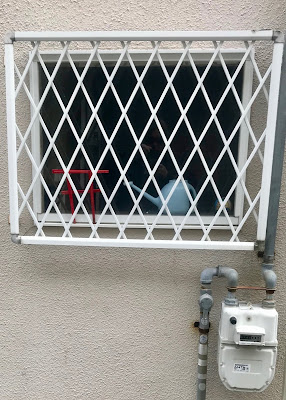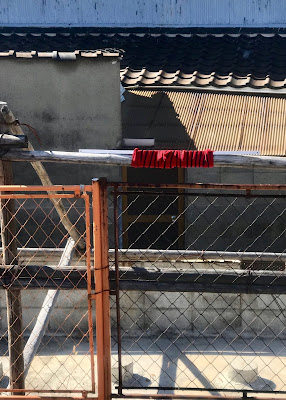Explorations and experiments in visual representations - multimodality, sensory ethnography, reflexivity, autoethnographic vignettes, ethnographic photography and ba...

Wednesday, February 19, 2020
"Eliza Scidmore Photographed Everyday Life in Japan Over 100 Years Ago"
Photo and text from Spoon and Tamago - Japanese Art, Design and Culture, 2/5/20.
Eliza Scidmore was a force to be reckoned with. In the late 1800s to early 1900s she traveled extensively across Asia, writing, photographing and publishing several books. She was one of the only women photographers employed by National Geographic and would later become the first woman board member of the magazine. Japan was of particular interest to Scidmore, who visited numerous times and captured everyday life in Japan over 100 years ago.
Read and see more: http://www.spoon-tamago.com/2020/02/05/eliza-scidmore-photographed-everyday-life-in-japan-over-100-years-ago/?fbclid=IwAR2sddreTz_wD0JebaNW2FiNYzysDC0d72X8EE7TCVhiKKhM9VBMU4KdL4g#more-47639
Tuesday, February 18, 2020
ハートネットTV「手話で楽しむみんなのテレビ!~“昔話法廷”編~」 - NHK's Heart-Net TV "TV for everyone who enjoys sign language!" - 「Folktale Court」
Image and Japanese text from NHK's Heart-Net TV.
NHKの人気番組に手話がつく「手話放送」第2弾!今回は、Eテレで話題となったドラマ「昔話法廷」に手話をつけて放送。「さるかに合戦」をモチーフに、カニの親子を殺した猿が法廷で裁かれる。死刑を求めるカニの子ども、涙声で謝罪する猿の台詞を、耳の聞こえないろう者たちが手話で表現する。NHK初の手話つきドラマ、果たしてその仕上がりやいかに?手話のできる芸人・河本準一さんをナビゲーターに迎えてお送りする。
Rough summary: A court drama performed in Japanese Sign Language. A monkey character who killed a crap parent and child in an old Japanese folktale is tried in court.
NHK ETV (channel 2)
2020年2月19日(水) 午後8時00分 〜 午後8時30分
Wednesday, 2/19/20, 8:00 pm - 8:30 pm.
Source: https://www.nhk.or.jp/heart-net/program/heart-net/1291/
For more: https://www.nhk.or.jp/heart-net/article/315/
Saturday, February 15, 2020
"Japanese panel proposes using red and white flag as tsunami warning"
Image and text from The Japan Times, 2/14/20.
An expert panel of the Meteorological Agency has proposed that a red and white checkered flag be used to swiftly convey tsunami warnings to people with hearing impairments at seaside resorts.
A test conducted at a beach in Yokohama found that a red and white checkered flag is easy to see for people with color vision deficiency, the panel said Thursday.
The panel said the flag is also effective for evacuating people from abroad as it has the same design as an international maritime signal flag warning of danger.
The shorter side of the flag should be at least 1 meter long so people can see it from a long distance away, the panel said.
The agency will revise related regulations around June to call for the use of flags with this design. Possible examples include the flag being waved by lifeguards and raised at tsunami evacuation towers.
“The flag will be effective not only for the hearing impaired, but a wide range of people at noisy beaches,” said Atsushi Tanaka, a professor at the University of Tokyo and head of the panel.
Source: https://www.japantimes.co.jp/news/2020/02/14/national/japan-flag-tsunami-warning/
Wednesday, February 12, 2020
Wednesday, February 5, 2020
"Japanese manners videos show how to be a 'really cool' traveler in Japan"
Image and text from Japan Today, 2/5/20.
Japan is currently in the midst of a tourism boom at the moment, with 31.9 million foreign tourists traveling to the country in 2019, breaking the previous record for the seventh year running.
Now with the Tokyo 2020 Olympics and Paralympics roughly half a year away, tourist numbers are set to swell even further, prompting the Japan Tourism Agency to create a number of etiquette videos to educate travelers on some of the finer points of everyday Japanese life.
Ten videos in total have been released, covering everything from communal bathing to how to ride the trains, with the central theme based around the fact that tourists can be “really cool” by taking care to consider others during their travels.
While the new awareness campaign recalls the “Cool Japan” marketing concept promoted by the government in recent years, it also contains a wealth of useful information for visitors. So how should foreign travelers escape the ire of Japanese locals by being considerate to those around them? ...[T]ake a look at the videos...
Of the ten, I will include three in this post. The first two are about taking photos in public in Japan:
Taking Pictures Part 1
Taking Pictures Part 2
The third one is about public transportation. It gives advice to give up priority seats to pregnant women and senior citizens. But it does not mention disabled people...
Public Transportation
What??? So much for barrier free and accessibility...
The other videos deal with Walking on the Streets, Traditional Buildings, Public Baths and Hotels, Restaurants and Public Spaces. Check them out (if you want) at the source below. And check out the reader comments as well. Some readers have said that perhaps some Japanese people themselves should watch and heed these videos...
Source: https://japantoday.com/category/features/travel/japanese-manners-videos-show-how-to-be-a-'really-cool'-traveller-in-japan
Subscribe to:
Comments (Atom)












